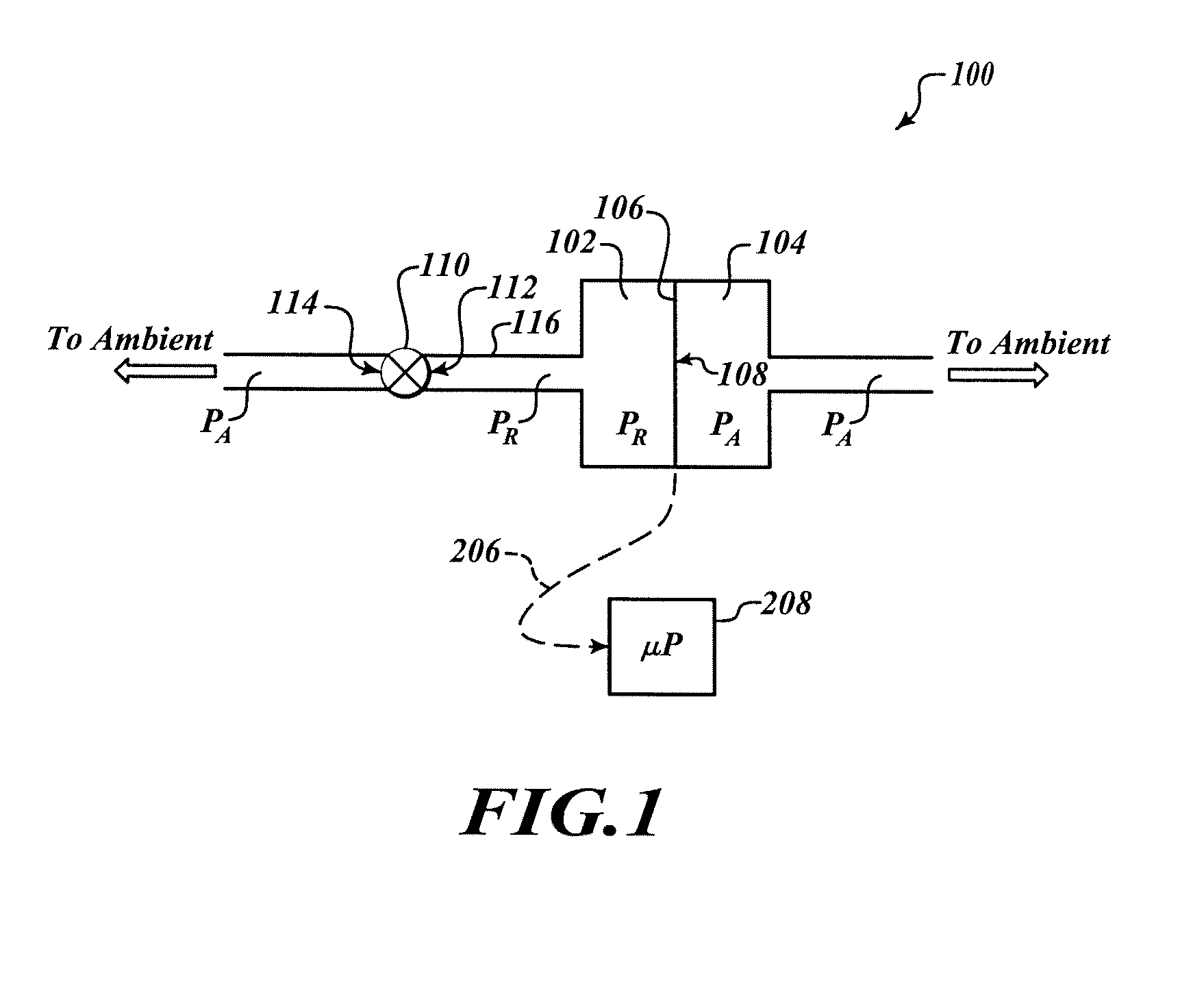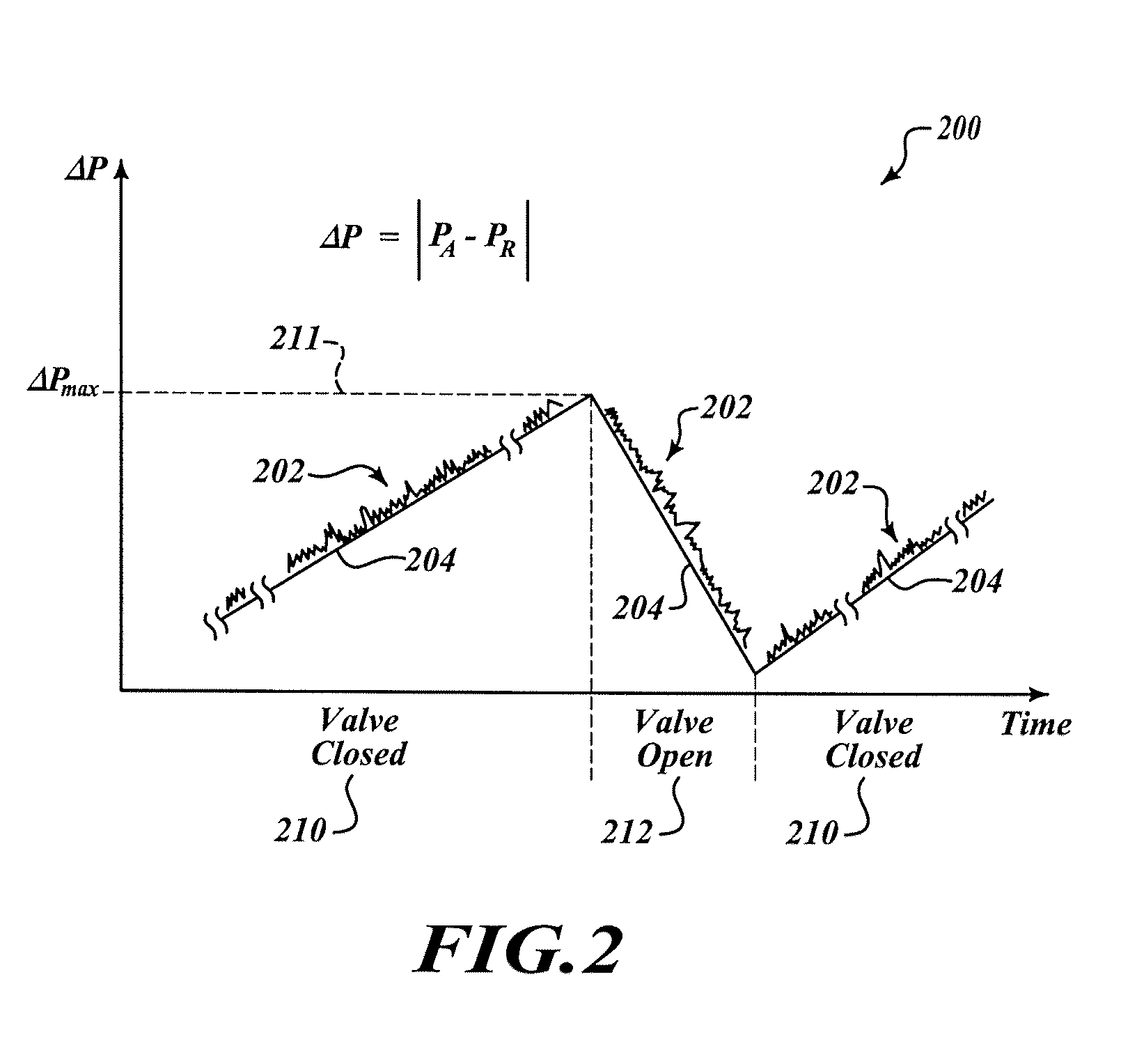Differential pressure assemblies and methods of using same
a technology of differential pressure and assembly, applied in the direction of liquid/fluent solid measurement, instrumentation, clear air turbulence detection/forecasting, etc., can solve the problems of aircraft being prone to severe hazards, difficult to measure frequency range, aircraft repair and downtime,
- Summary
- Abstract
- Description
- Claims
- Application Information
AI Technical Summary
Benefits of technology
Problems solved by technology
Method used
Image
Examples
Embodiment Construction
[0014]In the following description, certain specific details are set forth in order to provide a thorough understanding of various embodiments of the invention. However, one skilled in the art will understand that the invention may be practiced without these details or with various combinations of these details. In other instances, well-known structures and methods associated with pressure sensors, microphones and methods of making and using the same may not be shown or described in detail to avoid unnecessarily obscuring descriptions of the embodiments of the invention.
[0015]The following description is generally directed to differential pressure sensor assemblies and methods for detecting and measuring infrasound, which is generally characterized as sound produced at frequencies below 20 Hertz (Hz). Specifically, the differential pressure sensor assemblies and methods may be useful for the detection of atmospheric turbulence that may endanger an airliner or other flight vehicle. T...
PUM
 Login to View More
Login to View More Abstract
Description
Claims
Application Information
 Login to View More
Login to View More - R&D
- Intellectual Property
- Life Sciences
- Materials
- Tech Scout
- Unparalleled Data Quality
- Higher Quality Content
- 60% Fewer Hallucinations
Browse by: Latest US Patents, China's latest patents, Technical Efficacy Thesaurus, Application Domain, Technology Topic, Popular Technical Reports.
© 2025 PatSnap. All rights reserved.Legal|Privacy policy|Modern Slavery Act Transparency Statement|Sitemap|About US| Contact US: help@patsnap.com



